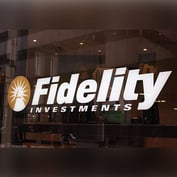At the end of 2002, the average advisory fee stood at 1.10%, a substantial decline from the 1.21% reported in 2001 and a bigger drop from the 1.24% reported in 1999 at the height of the bull market, as shown in chart 1 below.

Source: AdvisorBenchmarking.com.
So are advisory fees really under pressure? Well, yes, but the reasons are different than most advisors may think. Contrary to popular belief, the protracted bear market and the resulting losses in clients’ portfolios did not play a major role in the reduction of fees across the industry. While the value of clients’ accounts fell sharply during that period, the dire market conditions increased clients’ need for and appreciation of their advisors’ services. In a March 2003 survey of 655 RIA firms, 37% of advisors rated “clients’ appreciation of the value of the firm’s services” as being a “very positive” outcome of the bear market, compared to just 5% who noted the impact as being “very negative.” Due to the heightened perceived value of the advisory firms’ services, clients better tolerated the advisor fee, despite its magnified negative impact on the portfolio’s value.
We observed two other factors as being more responsible for the downward fee trend: an increased demand for comprehensive financial planning and growing competition from external sources.
1. The Growing Use of Consulting Fees
Clients’ rising demand for comprehensive financial planning in the last three years has triggered advisors to increase the use of consulting fees to properly compensate themselves for the additional financial planning services they offer. These project-based fees have grown gradually over that time period, making up nearly 24% of the average firm’s total revenues in 2002, as shown in chart 2 below.

Source: AdvisorBenchmarking.com.
As these consulting fees proved lucrative, advisors began to use them with more clients. At the same time, advisors also saw the need to lessen their clients’ focus on asset management–the one service where the firms’ value-add was most dismal. Instead, advisors wanted to shift the focus to comprehensive planning, where their services were more valued and the consulting fees were more applicable.
With those two objectives in mind–increasing the use of consulting fees and reducing the focus on the asset management service–the average RIA firm realized the potential gain in lowering its asset management fee. This fee reduction would serve to appease clients who are charged the hefty consulting fees. It would also create a shift in clients’ perception of the advisor’s value away from asset management and more toward comprehensive planning.
2. Competition
The growing competition from outside forces also put pressure on fees. Wirehouses, regional brokers, discount brokers, and CPAs increasingly adopted the fee-based model, effectively competing head-to-head with RIAs.








 June 13, 2003 at 08:00 PM
June 13, 2003 at 08:00 PM











